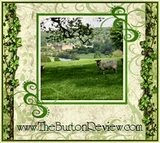
To coincide with our HFBRT The Scarlet Lion by Elizabeth Chadwick event I have decided to do my creative post on Medieval Knighthood.
William Marshall being The Greatest Knight and my 27th great grandfather sparked a keen interest in me to explore the origins of Knighthood in the Middle Ages further. Through my research I have learned that knight is a "gentleman soldier". Knighthood in the Middle Ages found it's genesis with the Emperor Charlemagne, King of Franks in the 8th century. It was during the Crusades in the 11th century that knights began to gain their notoriety. A well known and often legendary order of knighthood during this time was The Knights Templar; a holy order of knights which William Marshall always had an affinity towards and joined the order with instructions to the Templar's regarding his burial while on his death bed.
Basically a medieval knight was a warrior, from a middle to upper class family who was considered a protector and servant of the realm. They really held no political office, knighthood was granted by the sovereign to a selected person for some merit of achievement. In the medieval era only the sons of a knight were eligible for knighthood. These young men who were singled out were sent off to a castle as pages, and then later squires for other knights. Around the age of 20 they would be admitted to their rank and expected to obey the code of chivalry at all times, no failure was accepted.
It would be rare, if not impossible during the middle ages for a poor man to become a knight. The heavy armor worn and weapons used by the soldier was very heavy and very expensive. The soldier needed family support to purchase his armor, and horse(s), it was not provided by the state, thus William's uncle was his sponsor and later through ransoms gained in battle or tournaments William supported himself.
A knight rode into battle on horseback he was not a foot soldier. In battle a knight would carry his colors on his horse, armor, or on a banner. This was an identification similar to dog tags used in today's military. His colors also indicated he was a knight, and if captured by the enemy was afforded military courtesy. Beginning in about the 12th century knights carried their color banners to tournaments for identification in the games. These colors were actually the beginning elements of a family's coat of arms, which became very popular from the 12th century to present day. Once a knight they were expected to obey the code chivalry at all times. Their social status was permanently controlled, and their lives were always under watchful eyes.
Below are the Ten Commandments of the Code of Chivalry:
1. Thou shalt believe all that the Church teaches, and shalt observe all its directions.
2. Thou shalt defend the Church.
3. Thou shalt respect all weaknesses, and shalt constitute thyself the defender of them.
4. Thou shalt love the country in the which thou wast born.
5. Thou shalt not recoil before thine enemy.
6. Thou shalt make war against the Infidel without cessation, and without mercy.
7. Thou shalt perform scrupulously thy feudal duties, if they be not contrary to the laws of God.
8. Thou shalt never lie, and shall remain faithful to thy pledged word.
9. Thou shalt be generous, and give largess to everyone.
10. Thou shalt be everywhere and always the champion of the Right and the Good against Injustice and Evil.
I have thoroughly enjoyed this HFBRT event it's been my favorite so far. I hope you all will pick-up a copy of both The Greatest Knight and The Scarlet Lion by Elizabeth Chadwick. I cannot recommend these two books enough. You will be in for a treat.































Thank you. That was very interesting!
ReplyDeleteAwesome post, Susie, I love it.
ReplyDelete"Thou shalt not recoil before thine enemy."
I'll remember that one!
What a great code! Thanks for sharing this :)
ReplyDeleteLoved it and figures Marie I have the same favorites. Where did 10 go? It is nice to know what the real code for them was so now I can justify things in my mind. I had no idea it included church but that would make sense, gosh I am such a newbie to this time.
ReplyDeleteThanks for publishing these 10 Commandments and the information on knighthood. It is a good, quick over view.
ReplyDeleteWilliam definately stuck to #8, keeping his word. I very much enjoyed this post - I could see all of these things being important to a knight.
ReplyDeleteGreat information, Susie - thanks for sharing! Whomever wrote the code was zealously religious, but I suppose that was the norm.
ReplyDeleteThis place is gorgeous- great taste Susie- Love it!
ReplyDeleteThanks for all this wonderful information. I love learning stuff like this. I wish this code of ethics would still apply today, what a safer and better world it would be for sure. Great men indeed. I didn't know William was one of your ancestors!!!